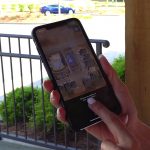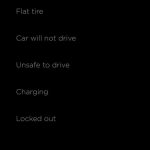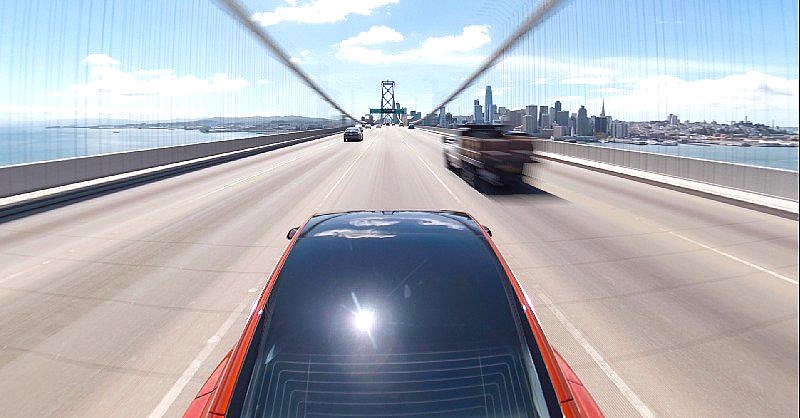
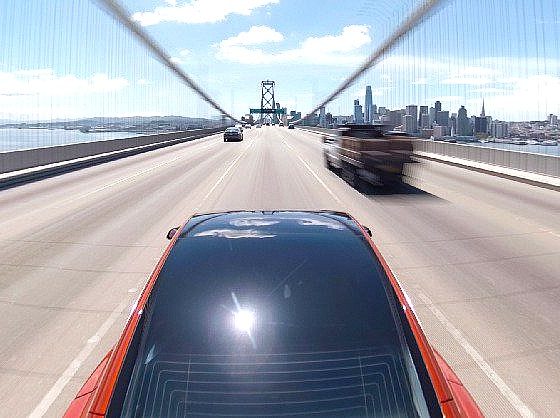
Firmware
Tesla’s self-driving future to take center stage at Autonomy Day: What to expect
Tesla’s Autonomy Day is starting in a few hours, and the anticipation among the electric car community is reaching a fever pitch. Elon Musk has promoted Autonomy Day over the past week, even lightly hinting that the event will “free investors from the tyranny of having to drive their own car.”
Tesla’s noted in its initial announcement that it will be providing investors a deep dive into its full self-driving initiatives. Several key Tesla executives involved in the development of the company’s full self-driving technology are expected to address investors at the event, including VP of Engineering Stuart Bowers, VP of Hardware Engineering Pete Bannon, and Sr. Director of AI Andrej Karpathy. More importantly, test drives on vehicles that are equipped with yet-to-be-released Autopilot and Full Self-Driving features are also expected to be conducted.
Apart from this information, Tesla has managed to keep the specifics of its upcoming autonomy event secret. With this in mind, here are some developments and features that we expect Tesla to showcase in Autonomy Day.
On April 22, Investor Autonomy Day, Tesla will free investors from the tyranny of having to drive their own car
— Elon Musk (@elonmusk) April 13, 2019
Summon and Navigate on Autopilot Improvements
When Tesla brought back Full Self-Driving as an add-on for its electric cars, the company placed Navigate on Autopilot and Summon, two features that were previously part of Enhanced Autopilot, as part of the FSD suite. Tesla has since improved the features, with Enhanced Summon allowing vehicles to navigate a parking lot to find their owners, and Navigate on Autopilot being capable of changing lanes without any turn stalk confirmation. These features are still being improved by Tesla, and it would not be surprising if the company decides to showcase improved capabilities of Summon and NoA to investors on Autonomy Day.

Traffic Light/Stop Sign response and automatic city streets driving
A look at Tesla’s order page for the Model S, Model 3, and Model X shows that Full Self-Driving has two capabilities marked for release “later this year.” These are “Recognize and respond to traffic lights and stop signs” and “Automatic driving on city streets.” Both these features require Tesla’s neural net to be trained enough to recognize visual input at a level that is quite close to that of a human driver. Tesla appears to be taking steps towards this goal, as indicated by findings from hacker-enthusiast greentheonly, who found what appears to be stop line detection features in 2019.4. Tesla’s recent Autosteer Stop Light Warning, which prompts drivers to take over the vehicle’s controls if a red light is detected, also appears to be a step towards automatic city driving.
Back in the third quarter earnings call, Director of AI Andrej Karpathy noted that while Tesla had already trained larger, more advanced neural networks that work very well, the company is unable to deploy it to the fleet due to the limitations of its hardware. “We are currently at a place where we’ve trained large Neural Networks that work very well, but we are not able to deploy them to the fleet due to computational constraints,” he said. These limitations are expected to be rendered null and void by Tesla’s Hardware 3, which is also expected to be discussed on Autonomy Day.
New mobile app features
At the core of the Tesla experience is its mobile app. It allows customers to view the status of their vehicles, and as shown in videos from members of Tesla’s early access program, it is also a central part of Summon’s more advanced features. A Teslarati reader who is part of the early access program recently sent new screenshots of updates in the mobile app (3.8.3), such as Roadside Assistance as well, which allows owners to call the company for aid in the event of a flat tire, or similar emergencies.
Tesla Network test drives
Tesla’s endgame with its full self-driving feature is the Tesla Network, a ride-hailing service that utilizes a fleet of autonomous vehicles. Back in the Q3 2018 earnings call, Musk noted the Tesla Network will be competing with giants such as Uber and Lyft. The company made its intentions for the Tesla Network even clearer when it released leasing options for the Model 3. In its announcement, Tesla stated that customers cannot purchase their leased vehicles after their lease period is over since the company will be using the electric cars for the Tesla Network. With Tesla expected to showcase its full self-driving features in Autonomy Day, it will not be surprising if the company provides a teaser of what it’s like to experience the Tesla Network firsthand.
An emphasis on human vigilance
While Autonomy Day will be focused on the company’s full self-driving features, Tesla will likely continue to emphasize that its vehicles and their driver-assist features still require constant attention on the road in the near future. This is something that Elon Musk has teased previously at an appearance in ARK Invest’s For Your Innovation podcast when he described how Tesla’s full self-driving features will be feature-complete. “I think we will be feature complete — full self-driving — this year. I would say I am certain of that. That is not a question mark. However, people sometimes will extrapolate that to mean now it works with 100 percent certainty, requires no observation, perfectly. This is not the case,” Musk said. Thus, for the following years, at least, Tesla will likely focus on Level 4 autonomous solutions, which are capable of operating a vehicle without human input but are equipped with pedals and controls for manual overrides just the same.
Tesla’s Autonomy Day will be livestreamed by the company.

Firmware
Tesla mobile app shows signs of upcoming FSD subscriptions
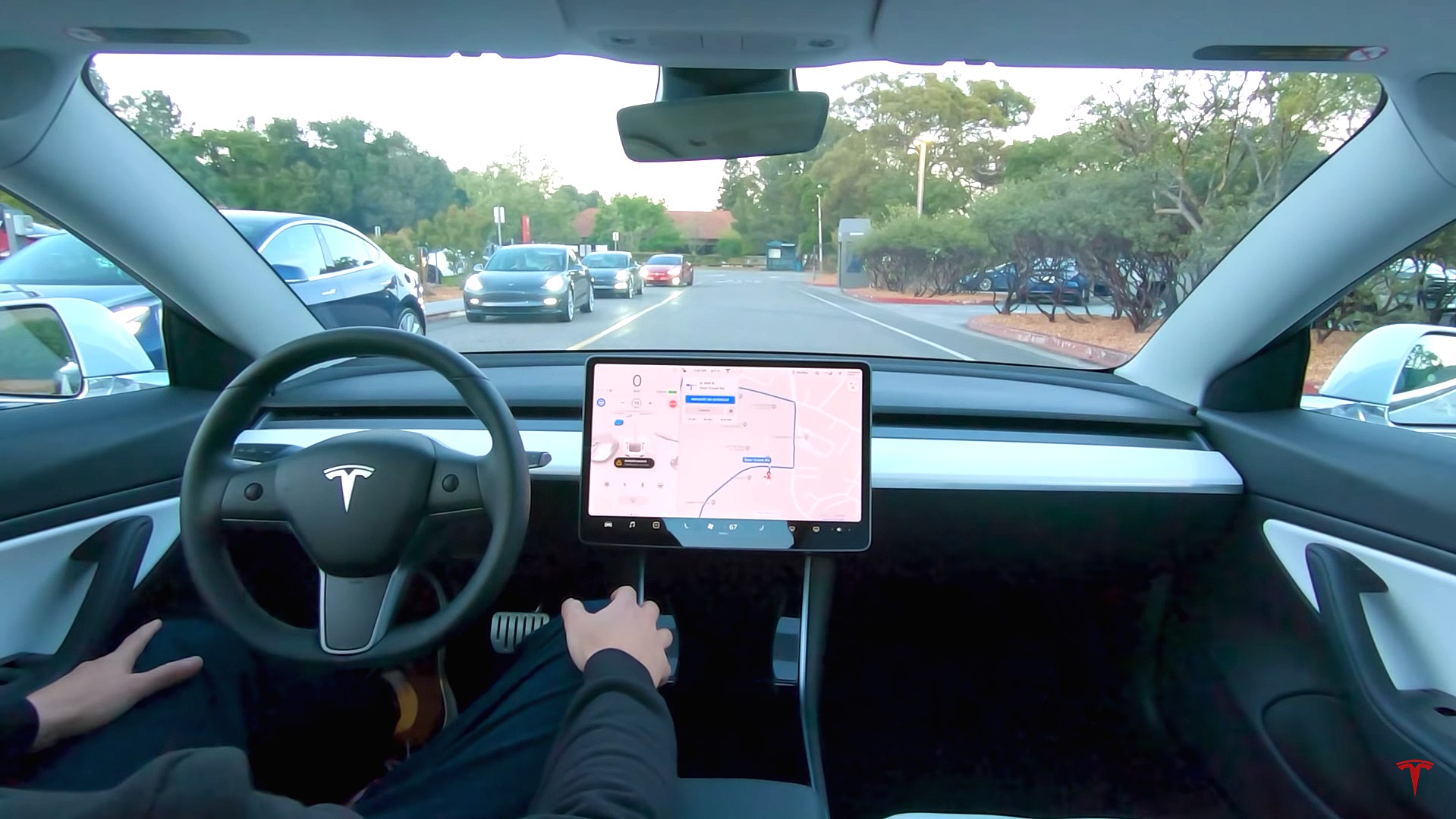
It appears that Tesla may be preparing to roll out some subscription-based services soon. Based on the observations of a Wales-based Model 3 owner who performed some reverse-engineering on the Tesla mobile app, it seems that the electric car maker has added a new “Subscribe” option beside the “Buy” option within the “Upgrades” tab, at least behind the scenes.
A screenshot of the new option was posted in the r/TeslaMotors subreddit, and while the Tesla owner in question, u/Callump01, admitted that the screenshot looks like something that could be easily fabricated, he did submit proof of his reverse-engineering to the community’s moderators. The moderators of the r/TeslaMotors subreddit confirmed the legitimacy of the Model 3 owner’s work, further suggesting that subscription options may indeed be coming to Tesla owners soon.
Did some reverse engineering on the app and Tesla looks to be preparing for subscriptions? from r/teslamotors
Tesla’s Full Self-Driving suite has been heavily speculated to be offered as a subscription option, similar to the company’s Premium Connectivity feature. And back in April, noted Tesla hacker @greentheonly stated that the company’s vehicles already had the source codes for a pay-as-you-go subscription model. The Tesla hacker suggested then that Tesla would likely release such a feature by the end of the year — something that Elon Musk also suggested in the first-quarter earnings call. “I think we will offer Full Self-Driving as a subscription service, but it will be probably towards the end of this year,” Musk stated.
While the signs for an upcoming FSD subscription option seem to be getting more and more prominent as the year approaches its final quarter, the details for such a feature are still quite slim. Pricing for FSD subscriptions, for example, have not been teased by Elon Musk yet, though he has stated on Twitter that purchasing the suite upfront would be more worth it in the long term. References to the feature in the vehicles’ source code, and now in the Tesla mobile app, also listed no references to pricing.
The idea of FSD subscriptions could prove quite popular among electric car owners, especially since it would allow budget-conscious customers to make the most out of the company’s driver-assist and self-driving systems without committing to the features’ full price. The current price of the Full Self-Driving suite is no joke, after all, being listed at $8,000 on top of a vehicle’s cost. By offering subscriptions to features like Navigate on Autopilot with automatic lane changes, owners could gain access to advanced functions only as they are needed.
Elon Musk, for his part, has explained that ultimately, he still believes that purchasing the Full Self-Driving suite outright provides the most value to customers, as it is an investment that would pay off in the future. “I should say, it will still make sense to buy FSD as an option as in our view, buying FSD is an investment in the future. And we are confident that it is an investment that will pay off to the consumer – to the benefit of the consumer.” Musk said.
Firmware
Tesla rolls out speed limit sign recognition and green traffic light alert in new update
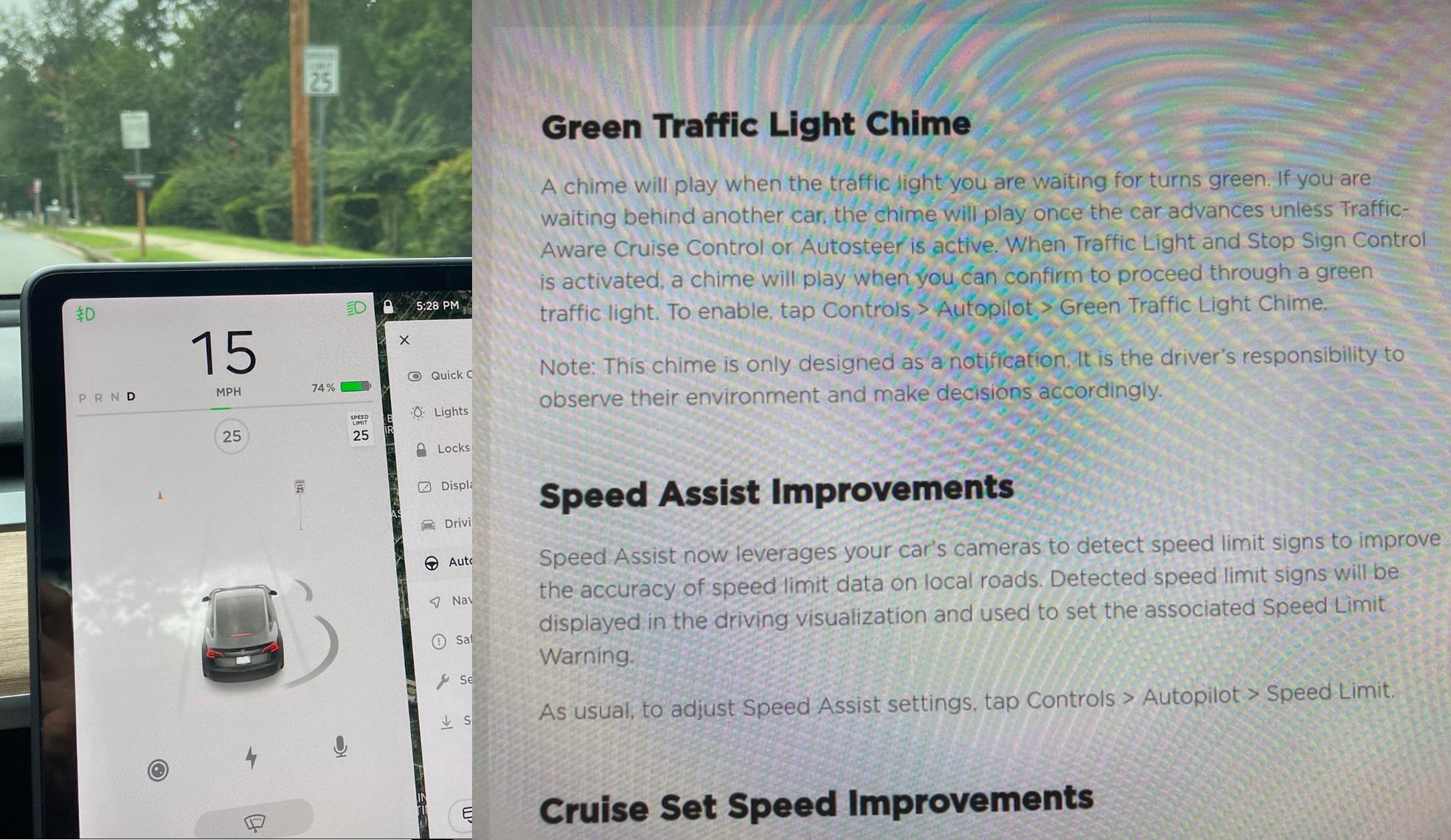
Tesla has started rolling out update 2020.36 this weekend, introducing a couple of notable new features for its vehicles. While there are only a few handful of vehicles that have reportedly received the update so far, 2020.36 makes it evident that the electric car maker has made some strides in its efforts to refine its driver-assist systems for inner-city driving.
Tesla is currently hard at work developing key features for its Full Self-Driving suite, which should allow vehicles to navigate through inner-city streets without driver input. Tesla’s FSD suite is still a work in progress, though the company has released the initial iterations of key features such Traffic Light and Stop Sign Control, which was introduced last April. Similar to the first release of Navigate on Autopilot, however, the capabilities of Traffic Light and Stop Sign Control were pretty basic during their initial rollout.
2020.36 Showing Speed Limit Signs in Visualization from r/teslamotors
With the release of update 2020.36, Tesla has rolled out some improvements that should allow its vehicles to handle traffic lights better. What’s more, the update also includes a particularly useful feature that enables better recognition of speed limit signs, which should make Autopilot’s speed adjustments better during use. Following are the Release Notes for these two new features.
Green Traffic Light Chime
“A chime will play when the traffic light you are waiting for turns green. If you are waiting behind another car, the chime will play once the car advances unless Traffic-Aware Cruise Control or Autosteer is active. When Traffic Light and Stop Sign Control is activated, a chime will play when you can confirm to proceed through a green traffic light. To enable, tap Controls > Autopilot > Green Traffic Light Chime.
“Note: This chime is only designed as a notification. It is the driver’s responsibility to observe their environment and make decisions accordingly.”
Speed Assist Improvements
“Speed Assist now leverages your car’s cameras to detect speed limit signs to improve the accuracy of speed limit data on local roads. Detected speed limit signs will be displayed in the driving visualization and used to set the associated Speed Limit Warning.
“As usual, to adjust Speed Assist settings, tap Controls > Autopilot > Speed Limit.”
Footage of the new green light chime in action via @NASA8500 on Twitter ✈️ from r/teslamotors
Amidst the rollout of 2020.36’s new features, speculations were abounding among Tesla community members that this update may include the first pieces of the company’s highly-anticipated Autopilot rewrite. Inasmuch as the idea is exciting, however, Tesla CEO Elon Musk has stated that this was not the case. While responding to a Tesla owner who asked if the Autopilot rewrite is in “shadow mode” in 2020.36, Musk responded “Not yet.”
Firmware
Tesla rolls out Sirius XM free three-month subscription
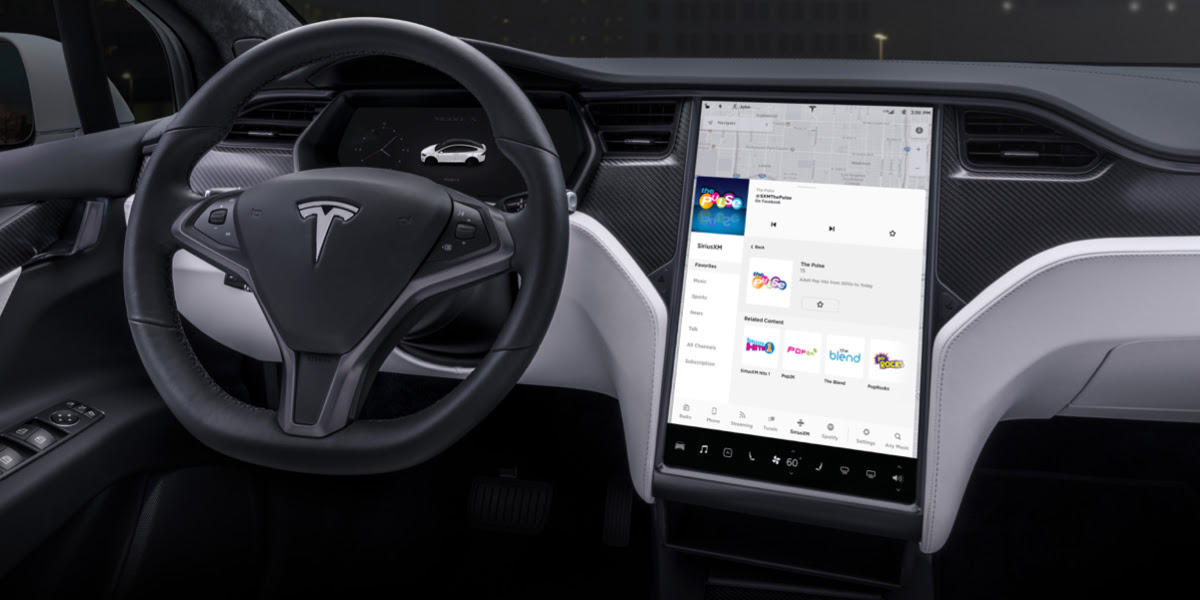
Tesla has rolled out a free three-month trial subscription to Sirius XM, in what appears to be the company’s latest push into making its vehicles’ entertainment systems more feature-rich. The new Sirius XM offer will likely be appreciated by owners of the company’s vehicles, especially considering that the service is among the most popular satellite radios in the country today.
Tesla announced its new offer in an email sent on Monday. An image that accompanied the communication also teased Tesla’s updated and optimized Sirius XM UI for its vehicles. Following is the email’s text.
“Beginning now, enjoy a free, All Access three-month trial subscription to Sirius XM, plus a completely new look and improved functionality. Our latest over-the-air software update includes significant improvements to overall Sirius XM navigation, organization, and search features, including access to more than 150 satellite channels.
“To access simply tap the Sirius XM app from the ‘Music’ section of your in-car center touchscreen—or enjoy your subscription online, on your phone, or at home on connected devices. If you can’t hear SiriusXM channels in your car, select the Sirius XM ‘Subscription’ tab for instruction on how to refresh your audio.”
Tesla has actually been working on Sirius XM improvements for some time now. Back in June, for example, Tesla rolled out its 2020.24.6.4 update, and it included some optimizations to its Model S and Model X’s Sirius XM interface. As noted by noted Tesla owner and hacker @greentheonly, the source code of this update revealed that the Sirius XM optimizations were also intended to be released to other areas such as Canada.
Interestingly enough, Sirius XM is a popular feature that has been exclusive to the Model S and X. Tesla’s most popular vehicle to date, the Model 3, is yet to receive the feature. One could only hope that Sirius XM integration to the Model 3 may eventually be included in the future. Such an update would most definitely be appreciated by the EV community, especially since some Model 3 owners have resorted to using their smartphones or third-party solutions to gain access to the satellite radio service.
The fact that Tesla seems to be pushing Sirius XM rather assertively to its customers seems to suggest that the company may be poised to roll out more entertainment-based apps in the coming months. Apps such as Sirius XM, Spotify, Netflix, and YouTube, may seem quite minor when compared to key functions like Autopilot, after all, but they do help round out the ownership experience of Tesla owners. In a way, Sirius XM does make sense for Tesla’s next-generation of vehicles, especially the Cybertruck and the Semi, both of which would likely be driven in areas that lack LTE connectivity.
